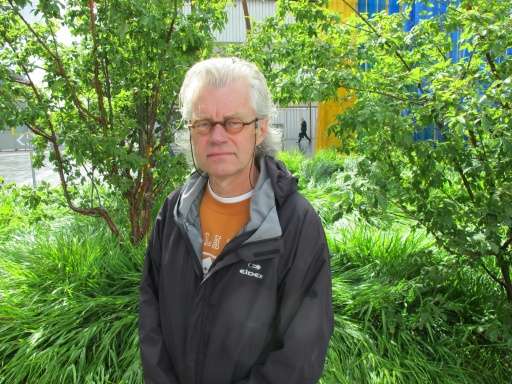Out of the countryside, wildlife returning to Amsterdam

Seals peep from Amsterdam's famous canals, while rare bats huddle in the eaves of houses, next to nesting birds. Wildlife—of the animal kind—is on the rise in the teeming Dutch capital.
More than 10,000 different animal species roam the city's nooks and crannies, sharing space already packed with around 800,000 Amsterdamers and millions of annual tourists, according to a new study.
And it appears to be an exodus out of the countryside, providing a potent illustration of the natural world's extraordinary resilience, experts and scientists say.
Since 2012 small grey or brown furred harbour seals have occasionally been known to travel down from the North Sea coast, arriving in Amsterdam after slipping through locks at the town of IJmuiden and swimming down the North Sea Canal to the city.
And on a rare occasions a lucky few spot the bigger grey seals, a protected European species with their distinctive mottled coat, or even the occasional porpoise.
"Biodiversity in Amsterdam has increased in the last decades, which has not been the trend nationally or even internationally," said Geert Timmermans, head of the city's ecology and landscape architecture project.
The new study of Amsterdam's biodiversity shows more than a quarter of all animal species living in The Netherlands, including some 300 protected kinds, are found in the densely populated city.
Part of the recovery of biodiversity is attributed to a ban on using pesticides to control weeds, as well as on farmland beyond the city limits.
And according to WWF Netherlands, the damage caused by humans appears to be more limited in Dutch cities where animal populations have only fallen by 30 percent since 1990, compared to the hedgerows and dunes which have seen a drop of 50 percent and 40 percent in the countryside.
Urban planners meanwhile have also increased their focus on maintaining so-called "ecological corridors" or green spaces.
Natural evolution
"Nature always exists. It adapts, it uses new situations to ensure that it can install itself," said biologist Jelle Reumer, the former director of Rotterdam's museum of natural history.
He created waves earlier this year by suggesting that people should not try to intervene to save endangered animals like the panda or rhinoceros, but should allow things to evolve naturally.
"Extinction is normal. More species have become extinct throughout geological history than are alive today," Reumer, a professor in Earth Sciences at Utrecht university, told AFP.
It is Amsterdam's leafier, wetter outskirts which have proved the most fertile ground for animals looking to set up home.
Here natterjack toads, red squirrels, foxes and voles along with the blue-winged grasshopper can be spotted trying to keep out of the clutches of birds of prey like hawks and peregrines.
A soprano pipistrelle bat was spotted in Amsterdam for the first time last year, while there is "a cautious recovery" of the swift and sparrow population which had gone into decline.
In cities, where several different micro-climates can exist, buildings have replaced cliffs as homes for the pigeons. While the warmer temperatures—sometimes 10 degrees C higher than in the countryside—have caused fig trees to flourish in Utrecht and attracted an Italian grasshopper to The Netherlands.
But other experts argue the situation is much more complex and it is hard to compare ecosystems.
"There is less biodiversity in the Arctic compared to tropical rainforests. But it is just as unique," stressed Martin Poot, a researcher with the Dutch statistics office.
"That is the same for the town or the country."
The Exterminator
But in the countryside, the large-scale industrialisation of agriculture has led to the disappearance of two-thirds of the wild birds since the 1960s. Sightings of cranes, oystercatchers, redshanks and larks are increasingly rare.
It is mankind turning the countryside into an "agricultural desert of cornfields, and cows and only one kind of grass," said Reumer
Still, as time passes, species will evolve, he insisted, adding that "cities are very young in geological time. Evolution takes thousands, if not millions of years."
The Earth is now facing "its sixth wave of mass extinction," said Reumer, but it is not caused by a meteorite such as wiped out 40 to 60 percent of living species at the end of the Cretaceous period, or a volcanic eruption which killed off 90 percent of species in the Permian period some 252 million years ago.
Today's exterminator-in-chief is mankind.
The International Union for Conservation of Nature estimates some 28 percent of mammal species are currently facing extinction.
"But mankind is also the only species capable of thinking about what it is doing," Reumer stressed—tasking cities like Amsterdam with protecting nature.
"It's not too late."
© 2016 AFP


















